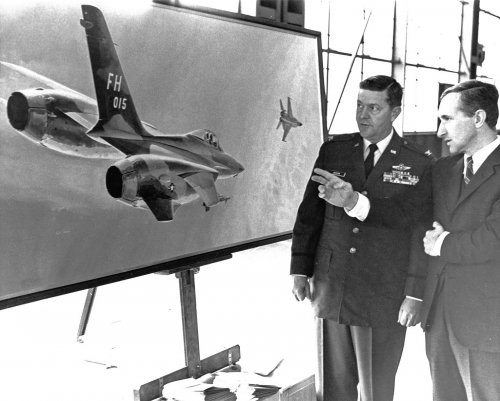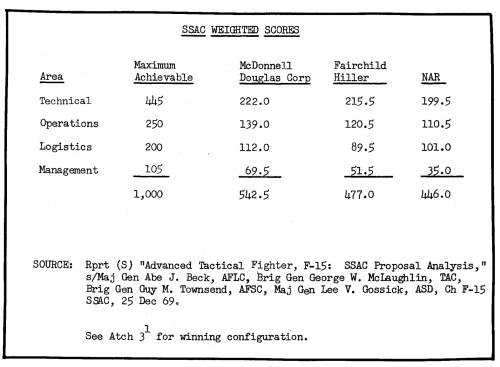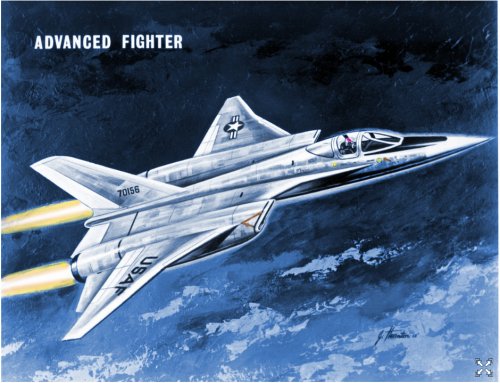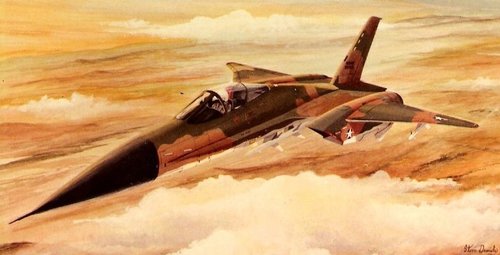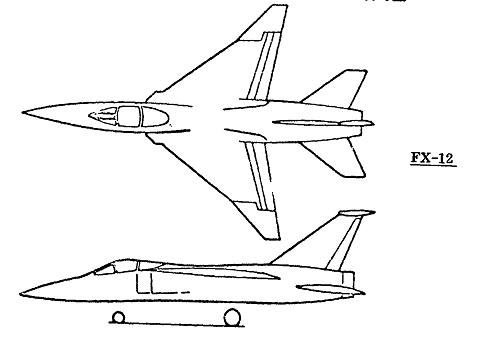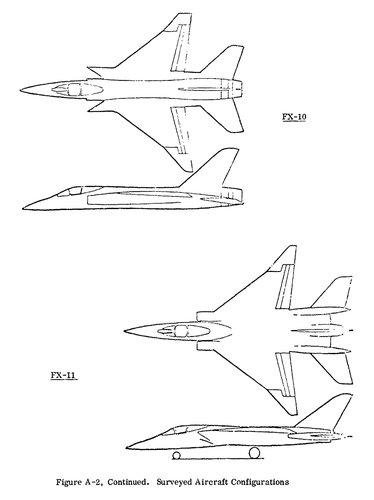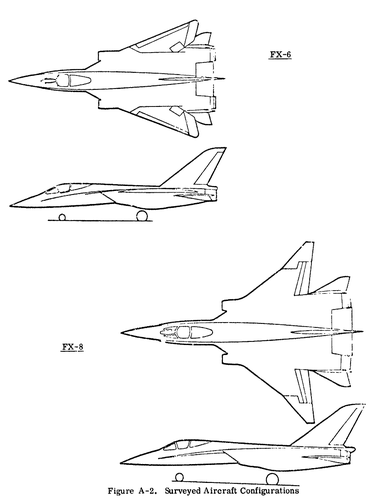Reminds me irresistibly of a cross between the Su-27 (podded, widely spaced engine placement, fixed wing, front fuselage) and Tornado ADV (inlet position, wind screen, tail fin, wing moving surfaces)!
You are using an out of date browser. It may not display this or other websites correctly.
You should upgrade or use an alternative browser.
You should upgrade or use an alternative browser.
Fairchild FX fighter project (rival to the McDonnell-Douglas F-15)
- Thread starter overscan (PaulMM)
- Start date
- Joined
- 31 May 2009
- Messages
- 1,154
- Reaction score
- 651
Painting of the Fairchild-Hiller (Republic) F-15 by Keith Ferris. Learning from the lessons of the F-4 in Vietnam, the Air Force wanted engines separated for survivability, and a large bubble canopy for enhanced visibility. Republic design engineers took these two requirements to the extreme.
Document courtesy Mike Machat
Document courtesy Mike Machat
Attachments
circle-5 said:Painting of the Fairchild-Hiller (Republic) F-15 by Keith Ferris. Learning from the lessons of the F-4 in Vietnam, the Air Force wanted engines separated for survivability, and a large bubble canopy for enhanced visibility. Republic design engineers took these two requirements to the extreme.
Document courtesy Mike Machat
Heh, from that angle I can see "F-105".
- Joined
- 27 December 2005
- Messages
- 17,694
- Reaction score
- 26,001
- Joined
- 13 May 2006
- Messages
- 1,039
- Reaction score
- 945
I like huge pictures of planes. Very nice
Does anyone else wonder if single-engine handling with the engines so far apart might have been, ahem, exciting?
- Joined
- 6 November 2010
- Messages
- 5,226
- Reaction score
- 5,433
Just what I was thinking.
Source: http://www.bharat-rakshak.com/IAF/History/Aircraft/Canberra/Canberra02.htmlThe Canberra T.4 was used for initial qualification training, Instrument Rating Tests (IRTs) and various checks for trainee and operational pilots. A critical regime that the trainee needed to be properly trained in was “engine out” or “asymmetric” handling. The Canberra was designed in an era when engine-out flight characteristics were not as stringently specified as with modern aircraft. This resulted in single engine safety speed ( i.e. the speed at which the aircraft could be safely controlled with one engine out and one engine on full power) which was high by modern standards. For the B.2 and the T.4 there is a 45 knots gap between the single engine safety speed and the speed at which it the Canberra lifted off the ground. In contrast a Boeing 747 Jumbo Jet has a safety speed that is below its stall speed, which means it is fully controllable with 2 engines out on one side and full power on the engines on the opposite side (the worst situation) at any time that it is flying. Whereas for the Canberra after liftoff, if there were problems with one engine before the safety speed was reached, engine power on the good engine had to be reduced to keep the aircraft in control. All this was counter intuitive to Canberra novitiates, since the aircraft had lost half its power already, was close to the ground and needed to climb away. This situation usually called for ALL the power one could muster. Without a simulator to practice this regime safely in an earthbound building, the Canberra T.4 was the torture machine that the pilot learned how to save his and his QFI’s life in!
- Joined
- 21 May 2006
- Messages
- 2,978
- Reaction score
- 2,230
aim9xray said:That's what he said!
Nice painting!!!
Does anyone know the designation of the plane the Fairchild FX is chasing? Is it a MiG-25?
Regards
Pioneer
It would be interesting to see the full colour original
- Joined
- 13 August 2007
- Messages
- 8,386
- Reaction score
- 10,793
I have a question: Why has the Fairchild-Hiller (Republic) F-15 lost against McDonnell Douglas F-15 ?
Steve Pace
Aviation History Writer
- Joined
- 6 January 2013
- Messages
- 2,266
- Reaction score
- 224
Because the latter was better than the former according to the USAF, TAC (now ACC) and DoD. -SPMichel Van said:I have a question: Why has the Fairchild-Hiller (Republic) F-15 lost against McDonnell Douglas F-15 ?
- Joined
- 27 December 2005
- Messages
- 17,694
- Reaction score
- 26,001
Well, a little more detail in this document:
Fairchild ranked second, with a strong technical proposal, let down in a few other areas. Its low "logistics" rating probably relates mainly to production plans where Fairchild and Rockwell both proposed building new manufacturing plants, and McDonnell-Douglas didn't. Rockwell's design was highly regarded aerodynamically but overall weaker in all areas, specifically in management, an overly complicated avionics proposal and higher cost.
It's believed McDonnell-Douglas were added last to the 3 issued contracts after Fairchild and Rockwell and their earlier proposals weren't great, but after they lost VFX (which was their primary focus) they put massive effort into FX and came out on top.
Fairchild ranked second, with a strong technical proposal, let down in a few other areas. Its low "logistics" rating probably relates mainly to production plans where Fairchild and Rockwell both proposed building new manufacturing plants, and McDonnell-Douglas didn't. Rockwell's design was highly regarded aerodynamically but overall weaker in all areas, specifically in management, an overly complicated avionics proposal and higher cost.
It's believed McDonnell-Douglas were added last to the 3 issued contracts after Fairchild and Rockwell and their earlier proposals weren't great, but after they lost VFX (which was their primary focus) they put massive effort into FX and came out on top.
Attachments
- Joined
- 13 August 2007
- Messages
- 8,386
- Reaction score
- 10,793
Thanks for info
- Joined
- 21 May 2006
- Messages
- 2,978
- Reaction score
- 2,230
PaulMM (Overscan) said:Well, a little more detail in this document:
http://www.afhso.af.mil/shared/media/document/AFD-120516-036.pdf
Fairchild ranked second, with a strong technical proposal, let down in a few other areas. Its low "logistics" rating probably relates mainly to production plans where Fairchild and Rockwell both proposed building new manufacturing plants, and McDonnell-Douglas didn't. Rockwell's design was highly regarded aerodynamically but overall weaker in all areas, specifically in management, an overly complicated avionics proposal and higher cost.
It's believed McDonnell-Douglas were added last to the 3 issued contracts after Fairchild and Rockwell and their earlier proposals weren't great, but after they lost VFX (which was their primary focus) they put massive effort into FX and came out on top.
Thanks a lot Paul.
I found this report really interesting!
In relation to - ‘The F-15 Eagle – Origins and Development 1964-1972 (By Jacob Neufeld)
Its interesting, and sad, that the USAF and its political masters did not support the notion of a ‘competitive prototype fly off’ of at least the two ‘principle/winning’ design submissions (McDonnell Douglas and Fairchild designs!).
It’s a costly irony that the ‘USAF argued it could afford neither the delay nor the estimated $600,000 cost of prototyping; which probably had little to do with the perceived (and in truth the incorrect and perceived threat of the ‘Mach 3 ‘Foxbat’, and probably more to do with the political want and threat of Dr. Enthoven’s want for the USAF to study a smaller, lighter-weight fighter (which would have been the LWF/ACF competition?).
I have a gut feeling the Fairchild design would have been seen to be better than the McDonnell Douglas FX submission, which I’m adamant had more to do with USAF/McDonnell Douglas fraternisation than really wanting to acquire the best air superiority fighter for its service!
But I guess that's sadly the real politics/career agenda of the U.S. Military Industrial Complex
Regards
Pioneer
- Joined
- 27 December 2005
- Messages
- 17,694
- Reaction score
- 26,001
Fairchild did a good job on AX. McDonnell-Douglas needed the work (F-4 production winding down), and made a decent submission. It was almost certainly the lowest risk design of the three, and that was probably a deciding factor. It could have had fly-by-wire, relaxed stability, phased array radars, multiple CRT displays, IRST, HMS - the technology was all in the pipeline (and McDonnell-Douglas even pioneered some of it). Harry Hillaker recalled his F-16 presentation at St Louis AIAA being packed with McDonnell-Douglas guys who'd worked on some of this cool stuff but didn't get it included on the F-15. Nevertheless I think the decision was right. Perhaps one of the other designs might have had some small advantages, but the risk and costs might have caused major headaches.
Pioneer said:It’s a costly irony that the ‘USAF argued it could afford neither the delay nor the estimated $600,000 cost of prototyping; which probably had little to do with the perceived (and in truth the incorrect and perceived threat of the ‘Mach 3 ‘Foxbat’, and probably more to do with the political want and threat of Dr. Enthoven’s want for the USAF to study a smaller, lighter-weight fighter (which would have been the LWF/ACF competition?).
If you read any publication from the day there was a real concern, almost a panic, about the Foxbat. It's also how we got the Tomcat.
Pioneer said:I have a gut feeling the Fairchild design would have been seen to be better than the McDonnell Douglas FX submission, which I’m adamant had more to do with USAF/McDonnell Douglas fraternisation than really wanting to acquire the best air superiority fighter for its service!
But I guess that's sadly the real politics/career agenda of the U.S. Military Industrial Complex
Regards
Pioneer
I'd say we got a good fighter in the F-15. As much as the North American entry interests me I think it would have had issues. And as big a fan as I was of the F-105, I think the Republic entry would have had them as well.
Last edited by a moderator:
- Joined
- 21 May 2006
- Messages
- 2,978
- Reaction score
- 2,230
And as big a fan as I was of the F-105, I think the Republic entry would have had them as well.
Yeah sferrin, I hear you!
I find your feedback and opinion interesting, because even though not an immediate fan of the F-105 (well probably more to do with the way it was employed in Vietnam anyway), I find the Fairchild-Rupublic's utilisation of the combat experience and shortfalls lessons of the their F-105 design over Vietnam, as the catalyst for incorporating the following features into its FX design submission, as clearly depicted from the excellent book The Thunder Factory: An Illustrated History of The Republic Aviation Corporation (ISBN 1-85409-040-2), by Joshua Stoff -
'- Well spaced engines
- It was recognised that Fairchild-Republic's 'three-body concept' of fuselage and two separate engine podded nacelles offered considerable weight savings.
[As was recognised and acknowledged and finally selected by Grumman for it's VFX (F-14A Tomcat) design]
- Fairchild-Republic's combat lessons in survivability from its F-105 Thunderchief's, over Vietnam were incorporated into their FX design.
By separating the engines, and housing them in pods, their FX design chances of survival were markedly increased in three key areas -
1/ by having completely separated and redundant primary controls and control surfaces;
2/ by locating the fuel tanks well away from the hot sections of the engines [As Fairchild would do with it's latter AX (A-10 Thunderbolt II) design];
3/ and by introducing true twin-engine reliability.
It is significant to note, that Fairchild-Republic designers and engineers recognising and appreciating the cost for future development of the aircraft, if their design was selected by the USAF, could also be significantly reduced because of the 'three-body' design concept. For it could accept changes in engine dimensions with minimal disruption to the designs structural arrangement, while savings were also possible because their FX design lent itself to simple sub-assemblies.
It's interesting to note, that in the book, it denotes - 'In late 1969, however, McDD, in a highly controversial and politicized decision, was selected to build the F-15...........
There were evidently several obscure reasons why Fairchild Republic lost the F-15 contract. First, there is no question that McDD had a stronger political lobby.
Second, it was rumoured that, several months before the contract was awarded, the FBI traced a major leak of information directly from [Fairchild] Republic's F-15 programme to the Israeli Consulate in New York and thus a number of Air Force generals may have been ill disposed towards [Fairchild] Republic on grounds of security.
Finally, weeks before the F-15 decision was announced, Grumman won the contract to build the F-14 fighter for the Navy, and for geo-political reasons it is doubtful that the Pentagon would have awarded two major aircraft contracts to corporations whose principle factories were but nine miles apart.'
So some interesting insight into the reasoning of the layout of the Fairchild-Republic FX design submission - alas still no official designation
Lets hope we can find more on this beautiful design!!
Regards
Pioneer
I wonder how well it and the NAA design would have handled high AOA with their single tails. (Then again the F-16 seems to do okay without the need for high AOA excursions so who knows?) Personally, my favorite of the three was the NAA design with Republics a close second. Thing is, NAA would have probably run into the same issues Sukhoi did with the gothic wing, and the box-like fuselage of McDD's design came in pretty handy when the CFTs came along.
- Joined
- 2 August 2006
- Messages
- 3,253
- Reaction score
- 1,516
Didn't fairchild come up with the idea of the CFT's and pass the idea to MDD after they didn't win the contract? Or is that just an urban myth?
Also, while the three body design does have the advantages listed, it also has the disadvantages of high friction drag (More surface area), more interference drag (More intersections), and thrust line issues in engine out situations. The last can be overcome, but at a cost, such as a larger vertical tail. Also, such designs typically need more roll control power and damping due to the engines being placed away from the center of mass laterally. Though I really like the design as well.
With regard to the single vertical tail, I think the major issue would have been spin resistance, more so than high alpha. That was one of the main reasons the USAF was interested in twin tails. Like SFerrin, I've also wondered if the NAA design would have had the wing rock problems the Sukhoi T-10 had as well. Although, NAA had those small strakes on the nose that may have helped alleviate the "wandering" she vortex off of the wing leading edge. Whichever the case, I still consider it a beautiful design.
Having said that, the F-15 has been an outstanding design and if one of the other aircraft had been chosen, we would be wondering what it would have been like if the USAF had chosen an airplane with twin tails for their main design at the time and how well it would have worked.
Also, while the three body design does have the advantages listed, it also has the disadvantages of high friction drag (More surface area), more interference drag (More intersections), and thrust line issues in engine out situations. The last can be overcome, but at a cost, such as a larger vertical tail. Also, such designs typically need more roll control power and damping due to the engines being placed away from the center of mass laterally. Though I really like the design as well.
With regard to the single vertical tail, I think the major issue would have been spin resistance, more so than high alpha. That was one of the main reasons the USAF was interested in twin tails. Like SFerrin, I've also wondered if the NAA design would have had the wing rock problems the Sukhoi T-10 had as well. Although, NAA had those small strakes on the nose that may have helped alleviate the "wandering" she vortex off of the wing leading edge. Whichever the case, I still consider it a beautiful design.
Having said that, the F-15 has been an outstanding design and if one of the other aircraft had been chosen, we would be wondering what it would have been like if the USAF had chosen an airplane with twin tails for their main design at the time and how well it would have worked.
- Joined
- 27 December 2005
- Messages
- 17,694
- Reaction score
- 26,001
Pioneer said:It's interesting to note, that in the book, it denotes - 'In late 1969, however, McDD, in a highly controversial and politicized decision, was selected to build the F-15...........
There were evidently several obscure reasons why Fairchild Republic lost the F-15 contract. First, there is no question that McDD had a stronger political lobby.
Second, it was rumoured that, several months before the contract was awarded, the FBI traced a major leak of information directly from [Fairchild] Republic's F-15 programme to the Israeli Consulate in New York and thus a number of Air Force generals may have been ill disposed towards [Fairchild] Republic on grounds of security.
Finally, weeks before the F-15 decision was announced, Grumman won the contract to build the F-14 fighter for the Navy, and for geo-political reasons it is doubtful that the Pentagon would have awarded two major aircraft contracts to corporations whose principle factories were but nine miles apart.'
So some interesting insight into the reasoning of the layout of the Fairchild-Republic FX design submission - alas still no official designation
Lets hope we can find more on this beautiful design!!
Regards
Pioneer
"Weeks before" is not exactly accurate. VFX award was Jan 1969, almost a year before FX on 23 December. The geographic point might be relevant, however.
bill Gunston makes much of the notion that the F-15 would have much of fuselage wing blending as seen on the F-16 and to a "limited" extent on the Mirage 2000 before the leaner type was preferred . No doubt for speed . That's why there was much interest in providing the fast packs for missions in which Foxbat chasing was not a priority . This certainly moves the date before 1975 , when Belenko's MiG was such an heart-breaker .
- Joined
- 21 May 2006
- Messages
- 2,978
- Reaction score
- 2,230
Also, while the three body design does have the advantages listed, it also has the disadvantages of high friction drag (More surface area), more interference drag (More intersections), and thrust line issues in engine out situations. The last can be overcome, but at a cost, such as a larger vertical tail. Also, such designs typically need more roll control power and damping due to the engines being placed away from the center of mass laterally. Though I really like the design as well.
Funny you should mention this issue Sundog!
In the same book, it states:
"....the company's [Fairchild-Republic] design group having begun to investigate the concept of separating the engines in podded nacelles ('three-body concept') because of the known difficulties experienced in the installation of high-performance engines in the fuselage where unfavourable flow disturbances adversely affected the efficiency of the powerplants. This consideration, plus the promise of reduced wave and after-end drag at high speed, provided the initial impetus; ....."
Regards
Pioneer
- Joined
- 27 December 2005
- Messages
- 17,694
- Reaction score
- 26,001
High after-end drag was why the F-15's rear end was extensively modified after the contract was awarded and before first flight.
- Joined
- 2 August 2006
- Messages
- 3,253
- Reaction score
- 1,516
Pioneer said:Also, while the three body design does have the advantages listed, it also has the disadvantages of high friction drag (More surface area), more interference drag (More intersections), and thrust line issues in engine out situations. The last can be overcome, but at a cost, such as a larger vertical tail. Also, such designs typically need more roll control power and damping due to the engines being placed away from the center of mass laterally. Though I really like the design as well.
Funny you should mention this issue Sundog!
In the same book, it states:
"....the company's [Fairchild-Republic] design group having begun to investigate the concept of separating the engines in podded nacelles ('three-body concept') because of the known difficulties experienced in the installation of high-performance engines in the fuselage where unfavourable flow disturbances adversely affected the efficiency of the powerplants. This consideration, plus the promise of reduced wave and after-end drag at high speed, provided the initial impetus; ....."
Regards
Pioneer
Speaking of that, I wonder how much of it was fixed by the F-100's ability to handle more flow distortion at the inlet then previous engines and if that somewhat lessened the advantage of not having the inlets so close to the fuselage boundary layer, especially with a good amount of beta at high alpha?
- Joined
- 27 December 2005
- Messages
- 17,694
- Reaction score
- 26,001
Pioneer said:So we still don't have a manufacturer's designation for the Fairchild-Republic/Fairchild Hiller FX design proposal/submission?
Regards
Pioneer
Possibly FH-100 I think, based on a model / drawing. (FH-129 appears to have been the A-10).
F-15 was used as a designation by all 3 manufacturers prior to submission, as it was decided as the FX designation prior to contract award.
- Joined
- 27 December 2005
- Messages
- 17,694
- Reaction score
- 26,001
Checked - FH-100 is used on an early Fairchild FX desk model with VG wings. The final fixed wing design might have been different.
- Joined
- 21 May 2006
- Messages
- 2,978
- Reaction score
- 2,230
ScrutorAudax
ACCESS: Confidential
- Joined
- 4 June 2015
- Messages
- 66
- Reaction score
- 99
- Joined
- 27 December 2005
- Messages
- 17,694
- Reaction score
- 26,001
Very nice! Are you analysing this design for a particular reason?
ScrutorAudax
ACCESS: Confidential
- Joined
- 4 June 2015
- Messages
- 66
- Reaction score
- 99
I wanted to look at the general flow characteristics of the aircraft, especially the interaction between the strakes and the vertical stabilizer (shown in the picture I posted).
- Joined
- 27 December 2005
- Messages
- 17,694
- Reaction score
- 26,001
Great! Where did you find it?
- Joined
- 27 December 2005
- Messages
- 17,694
- Reaction score
- 26,001
More NASA photos.

 crgis.ndc.nasa.gov
crgis.ndc.nasa.gov







NACA/NASA Langley: Celebrating 100 Years
NASA.gov brings you the latest images, videos and news from America's space agency. Get the latest updates on NASA missions, watch NASA TV live, and learn about our quest to reveal the unknown and benefit all humankind.
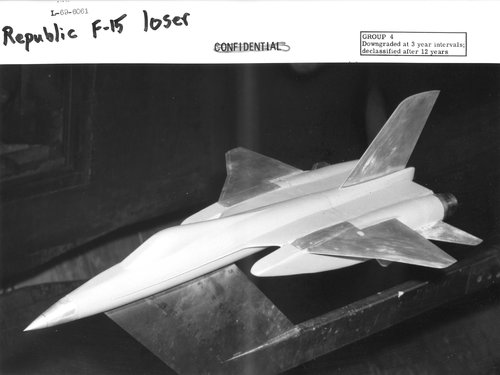
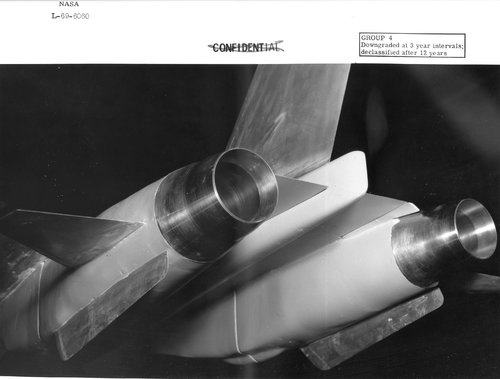
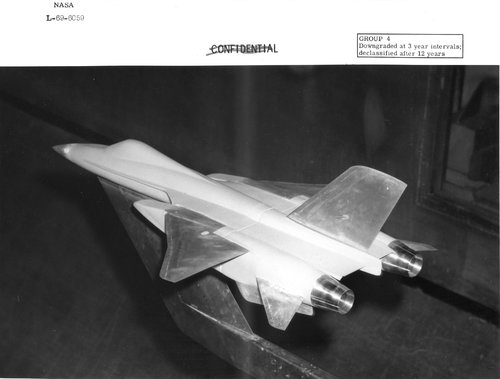
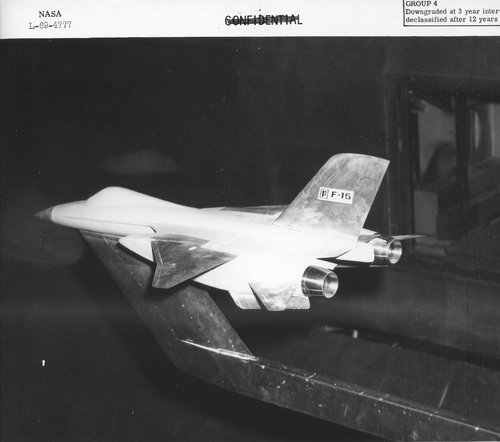
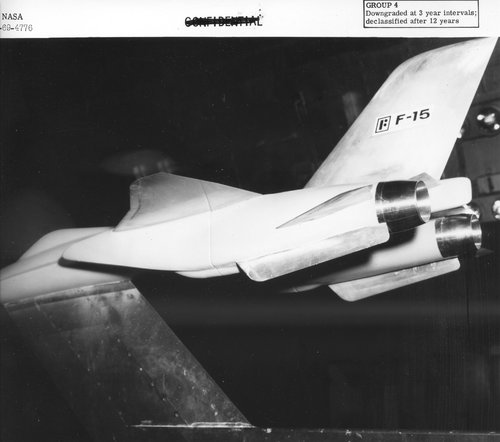
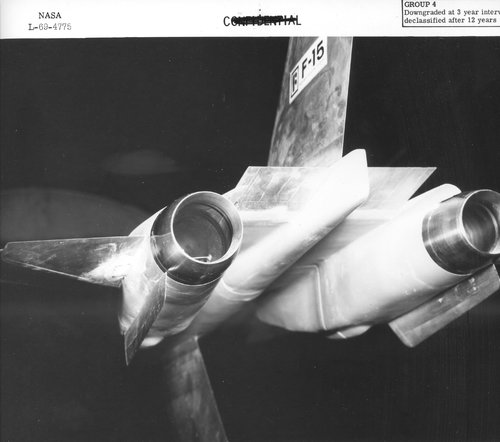
- Joined
- 27 December 2005
- Messages
- 17,694
- Reaction score
- 26,001
- Joined
- 27 December 2005
- Messages
- 17,694
- Reaction score
- 26,001
If you'd like a copy of this painting, see this topic:

- Joined
- 8 March 2009
- Messages
- 1,048
- Reaction score
- 1,273
Last edited by a moderator:
Similar threads
-
1965 - 1969 FX Competition (F-15 alternatives)
- Started by hesham
- Replies: 109
-
McDonnell-Douglas F-15 Projects
- Started by overscan (PaulMM)
- Replies: 244
-
-
McDonnell-Douglas Model 199 FX - design and development of the F-15
- Started by overscan (PaulMM)
- Replies: 136
-
ADF to LWF: Evolution of the General Dynamics F-16
- Started by overscan (PaulMM)
- Replies: 136


